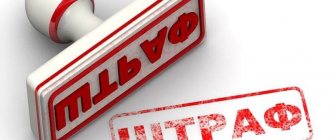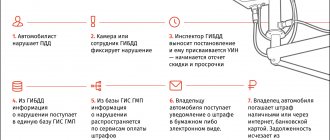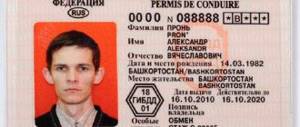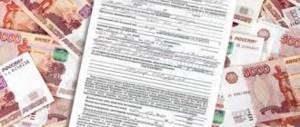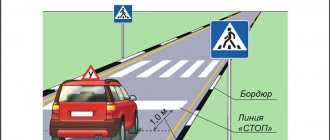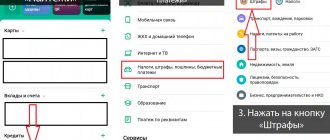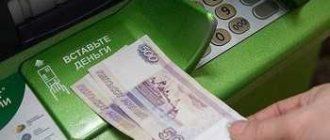AutoYurayt.rf / Fines
Back
Published: 07/03/2020
Reading time: 2 min
0
340
Evasion from the execution of an administrative penalty, in particular from payment of a main or double fine, entails the collection of a specified amount of funds or administrative arrest for a period of up to 15 days in accordance with Part 1 of Article 20.25 of the Code of Administrative Offenses of the Russian Federation. Let's consider the procedure for bringing to justice under this article, as well as whether you need to pay the first fine and what the consequences are if you ignore it.
- Who is held accountable under Article 20.25 of the Code of Administrative Offenses and for what?
- Is there an obligation to pay the first fine if you are charged under Article 20.25 of the Administrative Code?
- Can a double fine be imposed again?
- Consequences of failure to pay the main (first) traffic fine
Who is held accountable under Article 20.25 of the Code of Administrative Offenses and for what?
The following officials can hold a vehicle driver accountable under Article 20.25 of the Code of Administrative Offenses for failure to pay an administrative fine within three months:
- traffic police inspector in the office,
- traffic police officer on the road;
- bailiff.
All of these persons have the right to draw up a protocol, however, consideration of the case of bringing to responsibility for non-payment is carried out only by judges (in accordance with Part 1 of Article 23.1 of the Code of Administrative Offenses of the Russian Federation).
The procedure for holding a driver accountable is as follows:
- A traffic police officer stops the driver. Then he checks the database to see if he has an overdue fine. If such is detected, the inspector has grounds for bringing administrative liability in accordance with Part 1 of Art. 20.25 Code of Administrative Offenses of the Russian Federation.
- The traffic police inspector draws up a protocol on the citizen to transfer the case to court and notifies him about this.
- Next, the officer must release the driver and send the report to the judicial station at the place where the violation was committed. A traffic police officer cannot detain a driver before trial until a judge has issued an official detainment order. An exception would be if the citizen does not have an identification document with him, or if the violator declares that he intends to evade appearing on the summons.
- When a protocol and materials about non-payment are received by the court at the driver’s place of residence, the judge sets a date and time for consideration of the case, and also sends the citizen a summons to his place of registration. Attention! If a traffic police inspector gives a driver a court summons right on the road, then this is illegal. Since only the court has the right to issue a document.
- The last step in the process is attending a court hearing. It is recommended to be present at it if the driver has valid reasons for non-payment and evidence of this (for example, written explanations of the reasons, copies of complaints sent to the traffic police, or documents on sending on a business trip). It is possible not to attend a court hearing if there are no valid reasons that confirm the late payment of the fine. In this case, you should simply wait for the judge's ruling and pay the established amount.
More on the topic: Fine for not having a “Spikes” sign
What is violated and how is it punished?
Despite the fact that labeling began in 2021, not all sellers are used to it. Most often, inspectors find violations in different regions of Russia among footwear and tobacco dealers: they refuse to join the new digital environment until the very end and ignore product labeling. But in vain.
Responsibility for violations related to labeling is spelled out in detail in Article 15.12 of the Code of Administrative Offences. Selling goods without markings will result in a fine of 2,000 - 4,000 rubles for individuals, 5,000 - 10,000 rubles for entrepreneurs, 50,000 - 300,000 rubles for legal entities. In addition, all unmarked items will be confiscated without the possibility of return.
For example, in the Kirov region, in the year since the introduction of mandatory shoe labeling in Russia, Rospotrebnadzor seized 9.6 thousand pairs of shoes worth more than 7 million rubles from various sellers. And in Rostov-on-Don, during an inspection, customs officers found almost 5 thousand pairs of unmarked shoes worth 1.4 million rubles in just one store. During other inspections of Rostov stores, inspectors found more than 9 thousand pairs of counterfeit shoes with a total value of more than 3 million rubles. All goods were seized, and the sellers were brought to administrative responsibility.
A funny incident occurred in Yekaterinburg, where Rospotrebnadzor inspectors discovered “scorched” Adidas in... an Adidas brand store. There were no mandatory markings on the shoes. Inspectors seized all the illegal goods, and the court fined the store 50 thousand rubles for an administrative violation. Let us note that representatives of the store appealed these decisions to the regional arbitration court, but it refused to satisfy the claims.
Often in one store during inspections, several types of unlabeled products are discovered to the delight of the inspection.
Thus, in one of Aksay’s stores, customs officers found about 3 thousand counterfeit goods: almost 2 thousand pairs of shoes, more than a thousand sets of bed linen and about 80 bottles of various perfumes. Rospotrebnadzor officers arrived on the scene and seized all unmarked goods, and an administrative case was opened against the store owner.
And in Rostov-on-Don, at one retail outlet, during an inspection, customs officers found 146 bottles of perfume and more than 600 women’s blouses without markings. A similar incident occurred in Tula, where in one of the stores customs officers found and seized 57 pairs of shoes and 154 light industrial products worth 65 thousand rubles, as well as 137 bottles of perfume worth 15 thousand rubles. All products lacked mandatory labeling.
As for tobacco products, a large batch of cigarettes was confiscated from a dealer in Orsk: about 10 thousand packs worth almost 730 thousand rubles were found in his possession without the “Honest Sign” marking. All products were confiscated. An administrative violation report was drawn up against the businessman.
By the way, the matter does not always end with the establishment of an “administrative office”. According to the law, if the cost of goods without labeling exceeds 1.5 million rubles, then, according to Art. 171.1 of the Criminal Code (production, acquisition, storage, transportation or sale of goods without labeling), the culprit already faces either a fine of up to 300 thousand rubles, or imprisonment for up to 3 years with a fine of 80 thousand rubles.
This fate befell an entrepreneur from the Voronezh region, from whom the police seized more than 3.2 million packs of unmarked cigarettes worth 400 million rubles.
Samara customs officers also discovered a large batch of unmarked cigarettes in one of the city’s stores: almost 15 thousand packs had to be confiscated, and a criminal case was opened against the store owner.
And in the Chelyabinsk region, customs officers found 10 tons of new car tires without markings worth 2.4 million rubles in a truck traveling from Kazakhstan. A criminal case was opened against the entrepreneur, and all the tires were confiscated.
But a serious penalty can arise not only for the complete absence of marking, but also for its incorrect application. The fine for incorrect marking will be 5,000 - 10,000 rubles for individual entrepreneurs and 50,000 - 100,000 rubles for legal entities (Article 15.12 of the Administrative Code).
So, in Volgograd, an entrepreneur wanted to comply with the law and put markings on the tires he sold. Only he did not take into account that Decree of the Government of the Russian Federation dated December 31, 2019 No. 1958 regulates exactly how the marking should be affixed: “The identification means must be applied to the tires or to the label in a way that does not allow separation from the product without damage. Markings may not be printed on clear wrap film or any other outer wrapping material and overlap with other information.”
This is where the seller was caught: during the inspection, the inspection discovered that the markings could be separated from the tires without compromising their integrity. For inattention, the company faces a fine of up to 100 thousand rubles and confiscation of goods.
By the way, there is another reason to fine an entrepreneur selling labeled products: the absence of the mandatory “product code” detail in the cash register receipt threatens with a warning or a fine of 1,500 to 3,000 rubles for officials, for companies - a fine of 5,000 to 10,000 rubles (Part 4 Article 14.5 of the Administrative Code). The “product code” attribute is necessary so that information about the removal of goods from circulation enters the “Chestny ZNAK” labeling system.
Is there an obligation to pay the first fine if you are charged under Article 20.25 of the Administrative Code?
It is necessary to pay the first (main) fine, even if the offender has already been charged under Article 20.25 of the Code of Administrative Offences. Since the very fact of imposing a double fine does not relieve the driver from the obligation to bear the initial administrative penalty in accordance with paragraph 4 of Article 4.1 of the Code of Administrative Offences.
The driver behind the wheel of a vehicle has, by default, responsibilities established by the rules of the road or federal laws. If these duties are not observed, the driver will already be subject to sanctions under the Code of Administrative Offenses of the Russian Federation. In particular, the code prescribes the payment of an already imposed fine within 60 days (an additional period of no more than 10 days may be given for the entry into force of the resolution). That is, after the first penalty is imposed on the driver (for example, for violating traffic rules), he has an obligation to pay the assigned amount within the period established by law. And for delay there is a new double fine.
Can a double fine be imposed again?
A double fine can be imposed again for failure to pay the previous one imposed for the same penalty within the required period, that is, within 60 days from the date of entry into force of the court decision. In this case, the amount of the repeated fine issued will double.
For example, if a driver does not pay a double fine of 2 thousand rubles within 60 days, then a repeated penalty will provide for a payment of 4 thousand rubles.
Important! If the violator has not paid the double fine issued again, then its amount will double every 60 days. And this can happen ad infinitum. Therefore, it is recommended to transfer money immediately and on time so as not to incur exorbitant expenses.
Since the double fine will constantly and proportionally increase, it is better for the driver not to allow it to be issued. It is recommended to immediately pay the main (first) fine, since it is not allowed to re-impose it under the law (according to Part 5 of Article 4.1 of the Code of Administrative Offenses).
More on the topic: What happens to driving without a driver's license?
Real cases
Iraida Mishina, a resident of Ulyanovsk, said that recently money has been written off from her accounts several times, but the enforcement proceedings are the same. That is, they were fined double.
She turned to the bailiff for clarification. And he said that lately this has been happening everywhere, many people are complaining about the same problems.
According to I. Mishina, FSSP employees “blame” Sberbank. They claim that all mistakes are the direct fault of the bank. It is he who writes off the amounts for one enforcement proceeding several times. However, the amounts are not always correct. One man was charged 30,000 rubles instead of 3 thousand rubles.
Iraida M. also reported that the funds were written off from her social account, which received alimony from her ex-husband. Also, at the same time, funds were seized in the bank account from which she paid the loan. The first time, 2,930 rubles were written off in addition to the main fine, and the second time, 500 rubles were withdrawn from each account for the same fine.
How will the Pension Fund inform citizens about the size of their pension before it is assigned?
Another victim, let’s call her M., since she requested anonymity, said that money was written off from her accounts several times for the same fine.
“This money was a vital necessity for me at that moment, but I was never able to return it quickly. I wrote an application to the FSSP several times, spent a lot of time and even more nerves,” says M.
On social networks you can also find a lot of messages in which citizens of the Russian Federation complain about being written off three times and sometimes five times the amount for the same fine.
Consequences of failure to pay the main (first) traffic fine
If you do not pay the main fine on time, there will be no criminal liability. However, bailiffs may be involved in the enforcement of punishment. They have the right:
- Write off the fine amount from the offender’s personal bank card.
- Seize property owned by the offender. The value of the property must be equal to the amount of the penalty imposed. Most often, the car is seized.
- Ban registration actions.
But even in this case, there is a loophole in the legislation: if the violator does not store money on the card and does not own a car, then after 2 years the period of compulsory execution will expire. After this period, there is no longer any obligation to pay the main fine.
To summarize, it should be emphasized that fines must be paid on time or appealed in case of disagreement. In the first case, it is recommended to keep payment receipts (at least 2 years), since only these documents will help prove the transfer of money and protect the driver from trips to police stations and courts.
